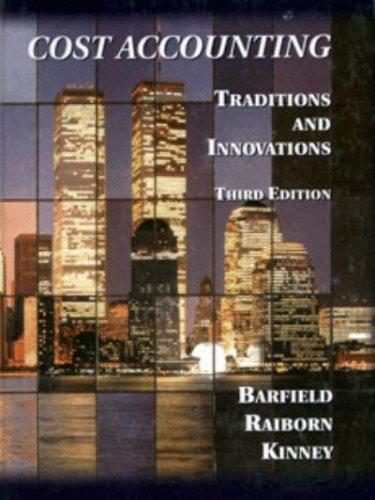In the mid- 1940s, a young man named Donald Roy was working on a Ph.D. at the
Question:
In the mid- 1940s, a young man named Donald Roy was working on a Ph.D. at the University of Chicago. As part of his dissertation project, Mr. Roy posed (anonymouslyj for eleven months as a radial-drill operator at a steel-processing plant. Workers in this plant were paid on a piece-rate basis (with a minimum hourly base pay of 85 cents) for all of the jobs (parts) they worked on. Some ofthe most interesting behaviors that Mr. Roy observed involved games the employees played based on their perceptions of the fairness ofpiece rates. If the employees perceived that the piece rates were set too low (required too much output per hour to exceed the base rate) they would engage in work slowdowns. Thus, they woidd receive the base rate pay of 85 cents per hour rather than the piece rate pay. The company's cost of components produced when employees engaged in slowdowns was consequently higher than the piece rate cost. The slowdown was essentially a way to express discontentment with the piece rate and implied to management a need to revise the piece rate pay. Communication among employees ensured that, with respect to a certain part, all employees participated in the slowdown. Otherjobs were recognized by employees as “gravy jobs.” On these jobs, the piece rates were sufficiently high to allow employees to easily exceed the base rate pay without exerting significant effort. On these jobs, employees carefully monitored each other so that no employee generated income substantially above the base rate of 85 cents per hour. The fear was that managers would revise the piece rate if employees generated too ?nuch hourly income from the piece rate pay.
a. Why would it be difficult in the environment described by Donald Roy to develop credible standards of performance?
b. Was the behavior of the employees ethical?
c. Is it ethical for managers to revise piece rate pay when it becomes obvious that standards can be easily met or beat?
d. How does honest communication between managers and workers help avoid the problems described by Donald Roy?
LO1
Step by Step Answer:

Cost Accounting Traditions And Innovations
ISBN: 9780538880473
3rd Edition
Authors: Jesse T. Barfield, Cecily A. Raiborn, Michael R. Kinney





